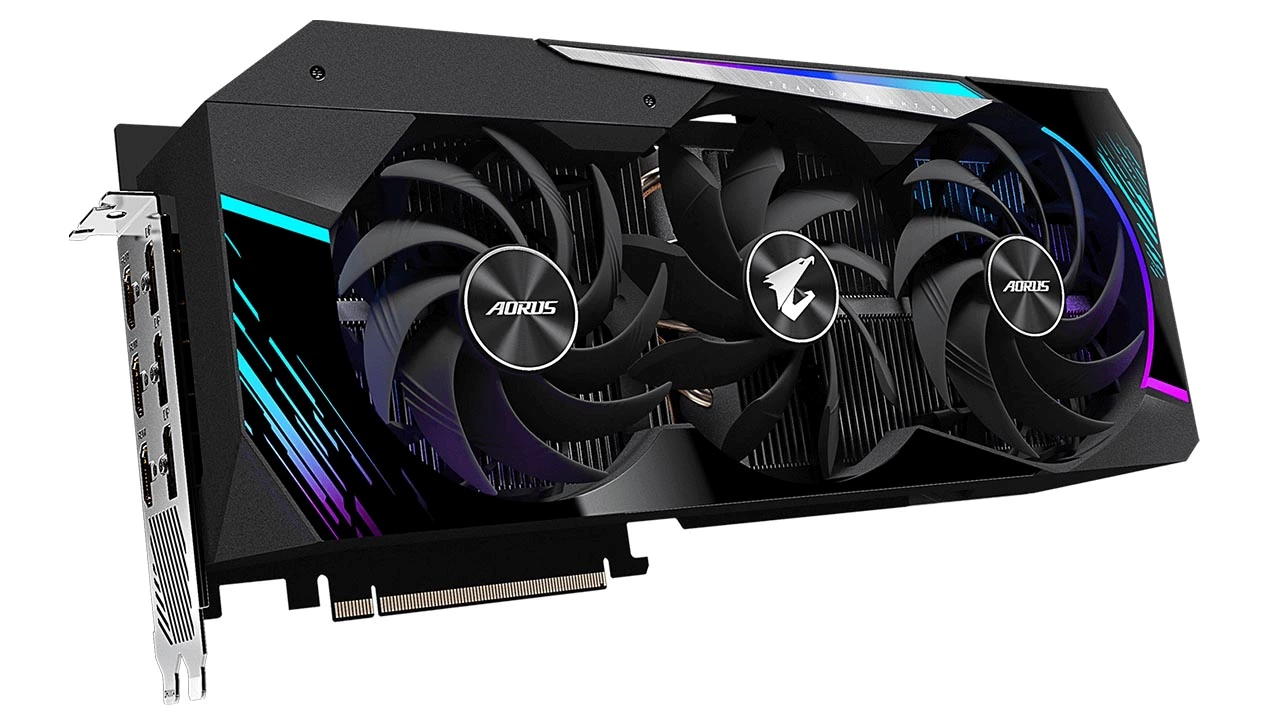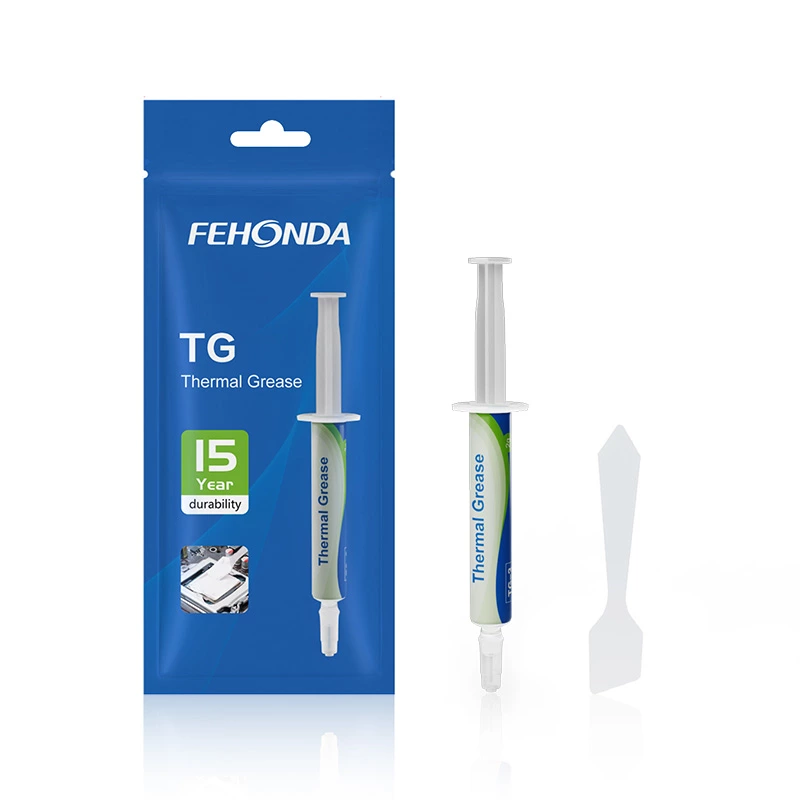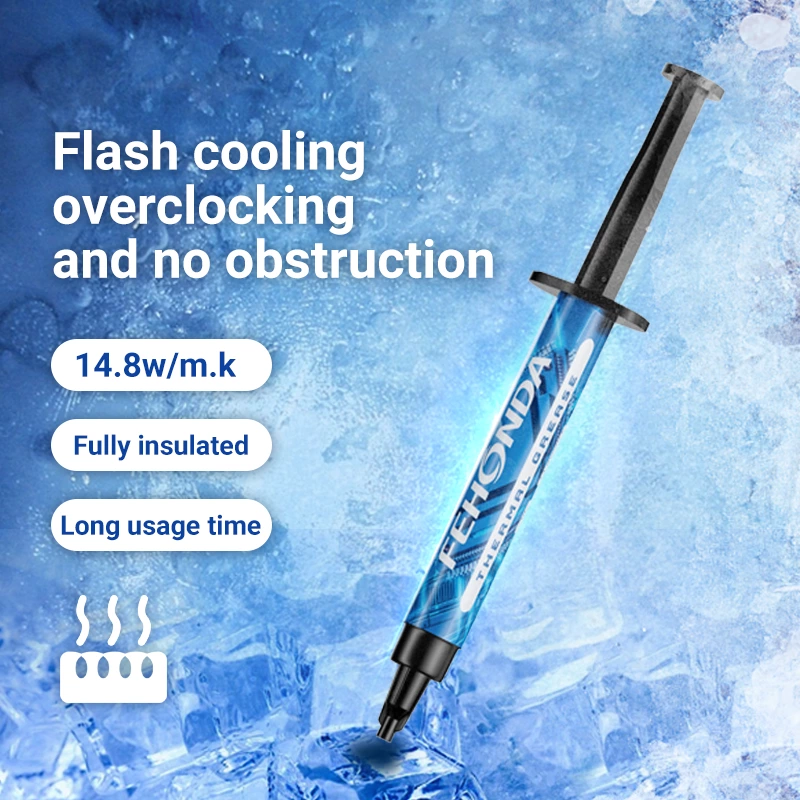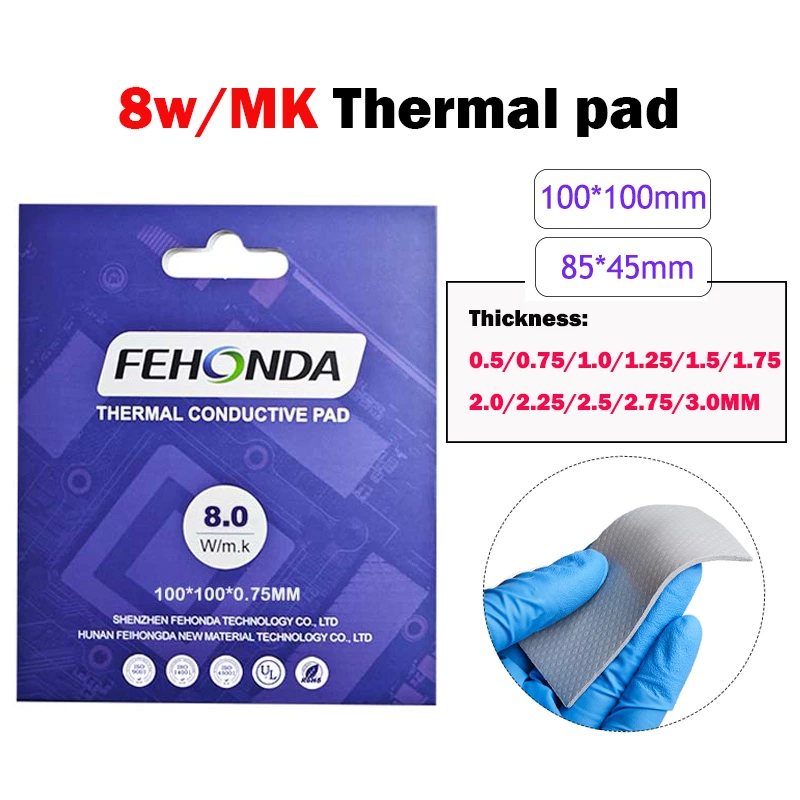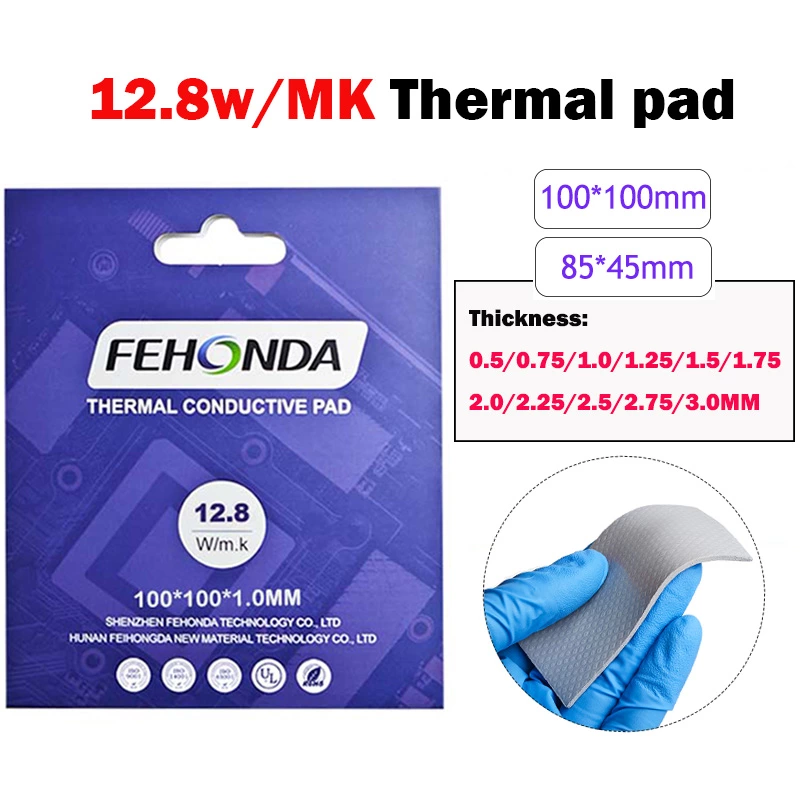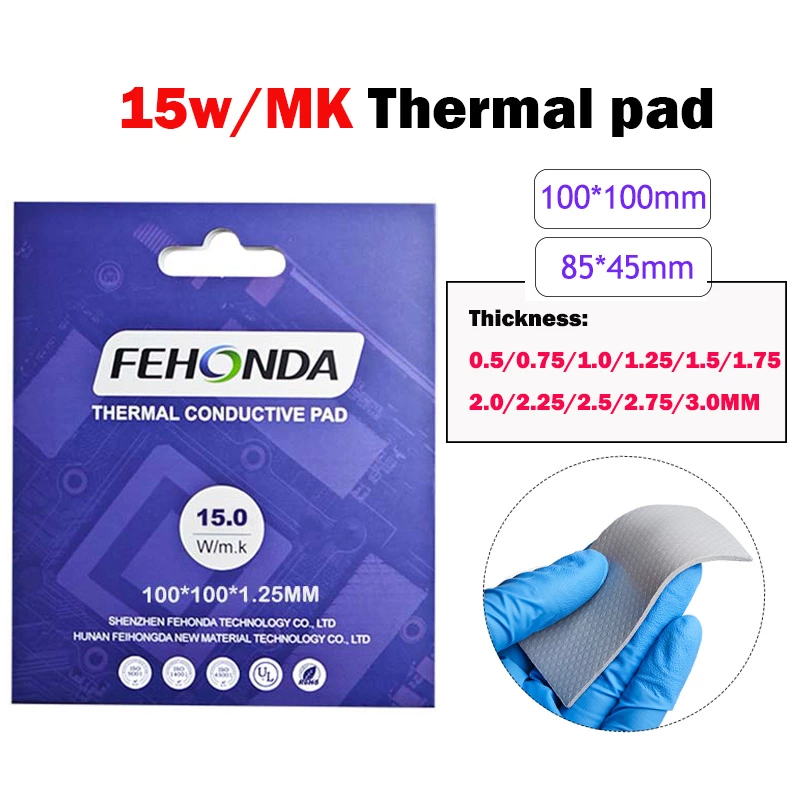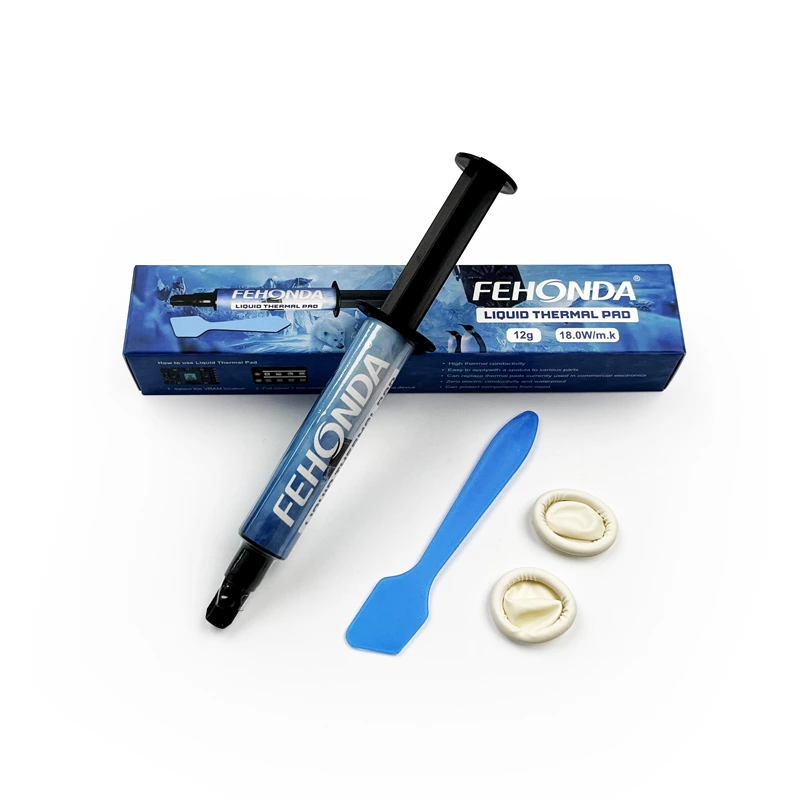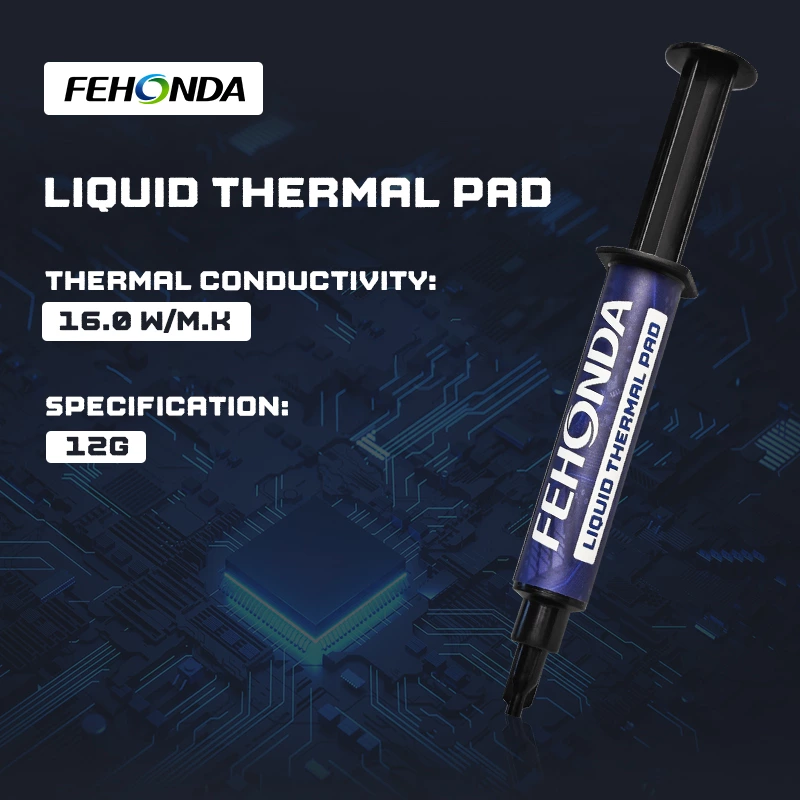Why Correct Thermal Pads are Crucial for Your AORUS RTX 3080 MASTER
Thermal pads are vital for your graphics card's intricate cooling system. They bridge the microscopic gaps between heat-generating components—such as the VRAM (Video Random Access Memory) chips on both the front and back of the PCB, and various "pads on the side" like VRMs (Voltage Regulator Modules) and MOSFETs—and the card's substantial heatsink and backplate assembly. This direct contact facilitates efficient heat transfer, preventing these sensitive components from overheating.
Using old, deteriorated, or incorrectly sized/thicknessed thermal pads can lead to several significant problems:
- Increased Operating Temperatures: This can cause thermal throttling, where the GPU intentionally reduces its clock speeds to prevent heat damage, directly impacting your performance.
- Reduced Performance and Stability: You might experience lower frame rates in games, system crashes, or visual artifacts during demanding tasks.
- Shortened GPU Lifespan: Prolonged exposure to excessive heat can accelerate the wear and tear on electronic components, potentially reducing the overall lifespan of your valuable graphics card.
Replacing thermal pads with new, high-quality ones of the correct thicknesses is an important maintenance step to keep your AORUS RTX 3080 MASTER 10G performing at its legendary best.
Recommended Thermal Pad Sheets & Thicknesses for GIGABYTE AORUS GeForce RTX 3080 MASTER 10G
For the GIGABYTE AORUS GeForce RTX 3080 MASTER 10G, different thermal pad thicknesses are recommended for various sections of the card. You will typically purchase thermal pad sheets of these thicknesses and then cut the individual pads to the specific sizes needed for each component.
VRAM (Front Side of PCB):
- Required Sheet: Use one (1) sheet of 85mm x 45mm x 2mm thermal pad.
- Individual pads for all VRAM modules on the front will need to be carefully measured and cut from this 2mm thick sheet.
VRAM (Back Side of PCB - Under Backplate):
- Required Sheet: Use one (1) sheet of 85mm x 45mm x 3mm thermal pad.
- Individual pads for the VRAM modules on the back of the PCB will need to be measured and cut from this 3mm thick sheet.
Pads on the side (e.g., VRMs, MOSFETs, other components on the PCB):
- Required Thicknesses: These components require a mix of 1mm AND 1.5mm thick thermal pads.
- You will need to purchase sheets of both 1mm and 1.5mm thick thermal pad material (e.g., an 85mm x 45mm sheet of each thickness).
- During disassembly, you will need to identify which specific "side" components require 1mm pads and which require 1.5mm pads, then measure and cut accordingly.
Important Note on Specific Pad Dimensions (Length x Width): Specific length and width dimensions for each individual pad on the AORUS RTX 3080 MASTER are not provided in the source information. Therefore, users will need to meticulously measure all components that require thermal pads (VRAMs on front and back, and all "pads on the side") on their specific card during disassembly. This will allow you to determine the exact length and width to cut from your chosen thermal pad sheets of the appropriate thicknesses (1mm, 1.5mm, 2mm, and 3mm).
Why Choose Fehonda Thermal Pads?
When undertaking a thermal pad replacement, especially with custom cutting from sheets of various thicknesses, the quality of the thermal pad material is crucial. Fehonda thermal pads are a recommended option due to several benefits:
- Premium Quality: Fehonda utilizes high-grade materials in their thermal pads, ensuring excellent thermal conductivity and durability for long-lasting, effective cooling.
- Enhanced Cooling: Specifically engineered to optimize heat transfer, these pads can help significantly reduce the operating temperatures of your GPU's critical components.
- Expertise: Fehonda specializes in thermal interface materials, offering products designed with an understanding of the cooling needs of modern, high-performance electronics.
- Versatile Solutions: Providing thermal pads in various thicknesses and common sheet sizes (like 85x45mm) offers the flexibility to custom-cut pads for a wide variety of GPUs and component layouts, essential for this card's varied requirements.
Tips for Replacing Your GPU Thermal Pads (Custom Cutting Required)
Replacing GPU thermal pads requires precision, care, and patience, particularly when you need to determine which "side" components require 1mm versus 1.5mm pads, and measure/cut all pads yourself. If you are not experienced with GPU disassembly, consider seeking professional assistance or meticulously following detailed video guides for your specific AORUS RTX 3080 MASTER model.
- Preparation: Gather your tools: new Fehonda thermal pad sheets (1mm, 1.5mm, 2mm, and 3mm), a precision screwdriver set, a sharp craft knife or precision scissors for cutting pads, a ruler or digital calipers for measuring, non-metallic prying tools (optional), high-purity isopropyl alcohol (90%+), and lint-free cloths. An anti-static wrist strap is crucial to protect components.
- Disassembly & Identification/Measurement: Carefully disassemble your graphics card to expose all components with thermal pads on both the front and back of the PCB, as well as the side components.
- Front & Back VRAM: Measure the length and width of VRAM chips.
- Pads on the side: Carefully assess these components. You'll need to determine which ones require 1mm pads and which require 1.5mm pads, then measure their length and width. Observing the thickness of the original pads can be a helpful indicator if they are not too compressed or degraded.
- Remove Old Pads & Clean: Gently remove all old thermal pad material. Thoroughly clean the surfaces of the components and the heatsink/backplate contact points with isopropyl alcohol to remove any oily residue or debris. Ensure surfaces are completely dry before applying new pads.
- Cut New Pads: Based on your measurements and thickness determinations, carefully and precisely cut the new Fehonda thermal pads from the appropriate sheets. Aim for clean, straight cuts. The pads should cover the entire surface of the component.
- Apply New Pads: Remove the protective film from one side of a newly cut pad, apply it to the corresponding component (ensuring correct thickness is used), then remove the film from the other side just before reattaching the heatsink or backplate. Ensure good contact.
- Reapply GPU Thermal Paste: Since the heatsink is removed from the GPU die, you will also need to clean the old thermal paste from the GPU die and apply a fresh, even layer of new, high-quality thermal paste.
- Reassembly: Carefully reassemble your graphics card, ensuring even pressure when reattaching the heatsink and backplate. Do not overtighten screws, as this can damage the PCB.
- Testing: Install the card back into your PC and monitor temperatures under load (e.g., using benchmarking software or demanding games) to verify the success of the replacement and ensure temperatures are stable and within optimal ranges.
Where to Purchase Fehonda Thermal Pads
For reliable, high-quality Fehonda thermal pad sheets suitable for your GIGABYTE AORUS GeForce RTX 3080 MASTER 10G, online marketplaces like AliExpress are a common source.
FEHONDA Thermal Pad ===>>Click Here to Go to AliExpress and Buy Directly Now
Ensure you purchase sheets of 1mm, 1.5mm, 2mm, and 3mm thickness from a reputable seller. An 85x45mm sheet of each should provide a good starting point for the VRAM applications and allow for cutting the side pads.
Conclusion: Optimize Your AORUS RTX 3080 MASTER's Premium Cooling System
Proper thermal pad replacement for the front VRAM, back VRAM, and side components is key to maintaining the exceptional performance, stability, and health of your GIGABYTE AORUS GeForce RTX 3080 MASTER 10G. By using high-quality Fehonda thermal pad sheets of the correct thicknesses (2mm for front VRAM; 3mm for back VRAM; 1mm and 1.5mm for side pads as determined) and carefully measuring and cutting the individual pieces to fit your card's specific layout, you can significantly improve your GPU's thermal performance. This leads to a cooler, potentially quieter, and more reliable gaming or creative experience from your top-tier graphics card.
